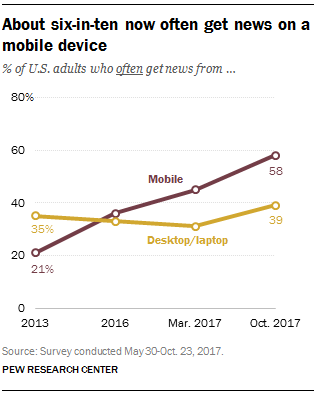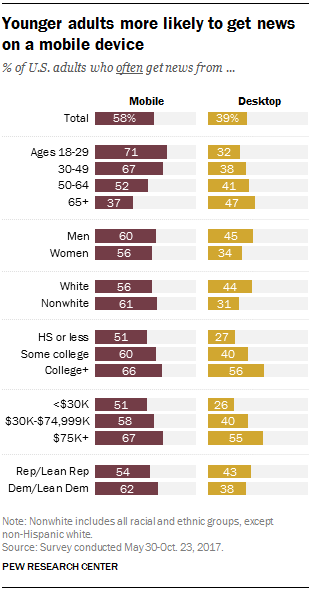The use of mobile phones for news now far outpaces the use of desktops and laptops for news — and that’s a big change over just the past two years, according to a factsheet released by the Pew Research Center on Tuesday.

The above chart refers to Americans who “often” get news from mobile or desktop/laptop, but 96 percent of Americans ever get news “online” (i.e. from a mobile device or computer).
Pew also offers up some other, not-super-surprising stats about who’s most likely to get news from mobile: young people, people of color, and Democrats (who also tend to be younger and less white). And “those with more formal education and higher incomes are more likely to get news on both mobile and desktop or laptop. Those with a college degree are more likely to often get news on mobile than those without a college degree (66 percent vs. 51 percent).”

This seems like a decent opportunity to check in on how the PC market is doing, so here you go: Desktop and laptop sales have fallen steadily since 2012, per Gartner research cited in PC Mag — but shipments actually grew for the first time since then in this year’s second quarter.
Leave a comment